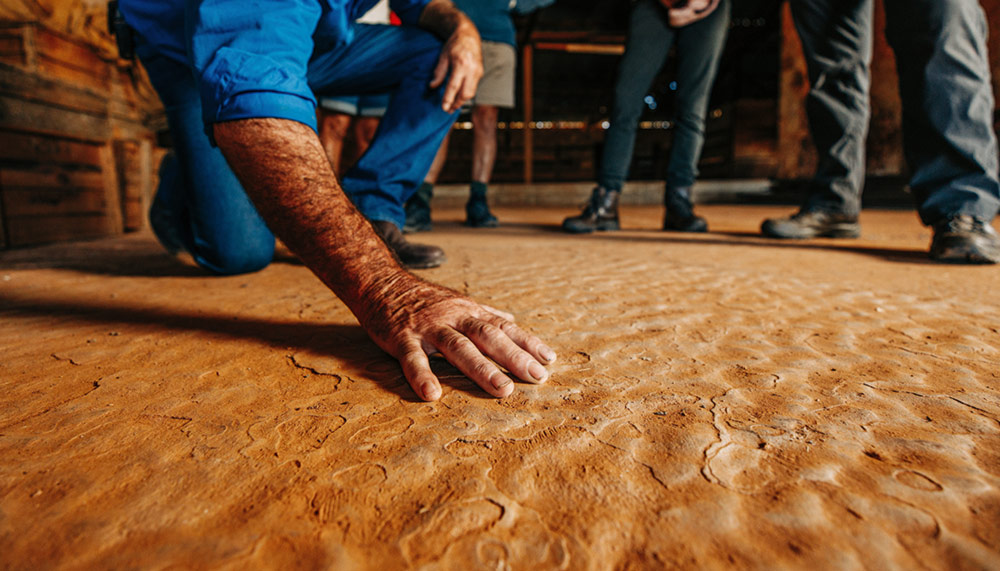A chance fossil discovery on a SA cattle station rewrote history when it unearthed the origins of animal life.
Story Gretel Sneath Photos Robert Lang
Around 550 million years ago, Central Australia lay beneath the sea. In parts of the area now known as the Flinders Ranges, the water was shallow enough for the sun’s rays to filter down to the ocean floor and nourish an algae-like mat that sustained Earth’s first living creatures.
Scientists believe that soft-bodied segmented blobs (later named Dickinsonia) flopped like a pancake on the slimy bacterial mat, blocking the sunlight needed for photosynthesis to occur. “Without light, the mat beneath them would decay and they would absorb these nutrients into their body – that’s how they appear to have fed,” explains Nilpena Ediacara National Park tour guide Ross Fargher. “Or, if they were a floating frond anchored by a holdfast, they would catch and absorb the nutrients drifting by.”
When a massive storm event like an underwater blizzard buried the marine creatures beneath layers of fine sand, the only evidence of their entombment was the delicate imprints they left behind, sandwiched between slowly hardening sand and the seabed. The outside world was completely oblivious to their existence until their miraculous discovery more than half a billion years later. “There are entire communities here completely intact,” Ross says.
A fourth-generation pastoralist, Ross has had a front-row seat on a once unfathomable journey travelling back through time to a lost Precambrian world, with his own backyard at Nilpena station declared the single most important site on the planet for evidence of the Ediacaran rise of early animal life. “There’s about eight other localities around the world that have fossils from this same period, but they aren’t as well preserved – or accessible,” he explains. “On the White Sea coast of Russia for instance, you need to abseil down a cliff to get to them and they’re all sitting in clay, so as soon as you touch them they fall to bits. Here, because it’s such hard sandstone, the preservation is so good that it looks like the fossils were stamped in yesterday.”
This story excerpt is from Issue #144
Outback Magazine: August/September 2022










